Introduction to Ganesh Chaturthi festival
Ganesh Chaturthi festival is a beloved Hindu festival celebrated with immense enthusiasm and devotion across India and by Indian communities worldwide. This vibrant festival honors Lord Ganesha, the elephant-headed deity revered as the remover of obstacles, the god of wisdom, and the patron of new beginnings. Celebrated primarily in states like Maharashtra, Gujarat, Karnataka, and Tamil Nadu, Ganesh Chaturthi brings people together in a spirit of unity and joy. This detailed guide, written for both fifth-standard students and adults, explores the festival’s history, traditions, significance, and modern practices, ensuring everyone can understand and appreciate its essence.
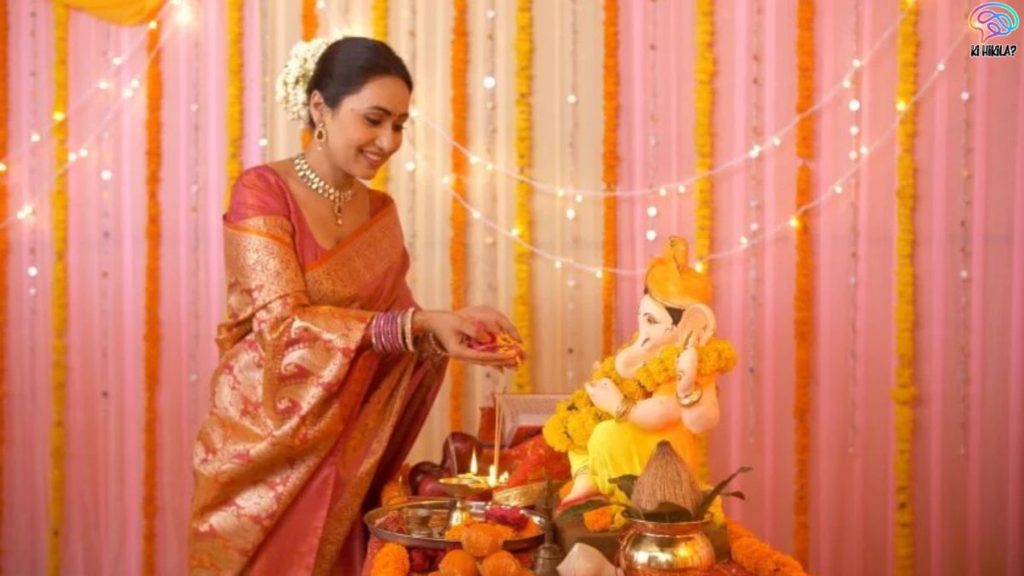
The Meaning of Ganesh Chaturthi festival
Ganesh Chaturthi marks the birth of Lord Ganesha, one of the most cherished gods in Hinduism. The festival typically occurs in August or September, based on the Hindu lunar calendar, specifically during the month of Bhadrapada. It begins on the fourth day (Chaturthi) of the waxing moon and lasts for 10 days, concluding on Anant Chaturdashi. During this period, devotees install idols of Ganesha in homes and public spaces, offer prayers, and perform rituals, culminating in the immersion of idols in water, symbolizing Ganesha’s return to his divine abode while taking away devotees’ troubles.
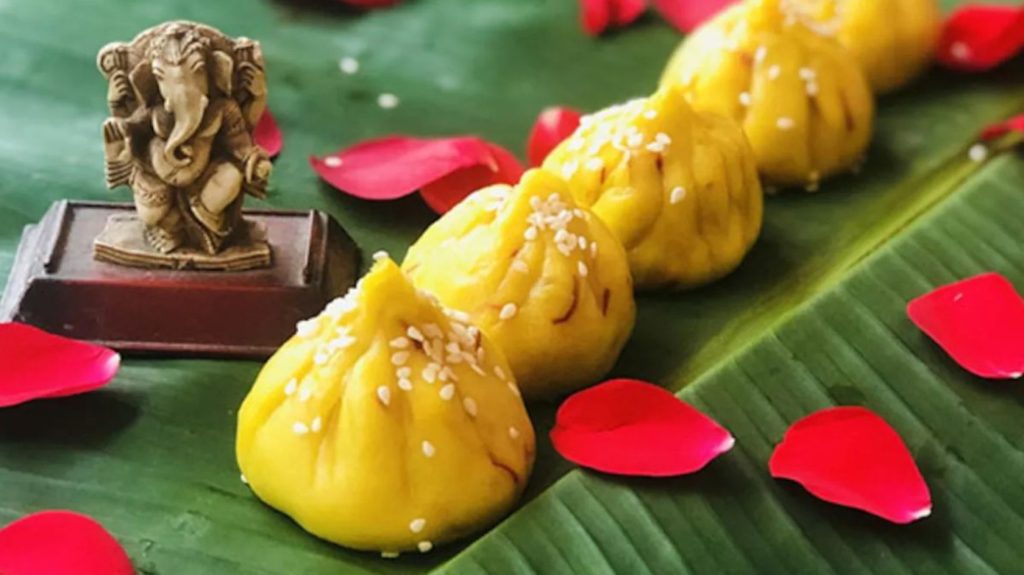
Who is Lord Ganesha
Lord Ganesha, also known as Ganpati, Vinayaka, or Vighnaharta, is a deity with a distinctive elephant head, a large belly, and a warm, approachable demeanor. He is worshipped before starting any new venture, such as a school project, a business, or a wedding, as he is believed to clear obstacles and bring success. Ganesha’s love for sweets, particularly modaks (sweet dumplings filled with coconut and jaggery), is a key part of Ganesh Chaturthi celebrations. His image, often depicted with a mouse as his vehicle, symbolizes wisdom, humility, and the ability to overcome challenges.
The Historical Roots of Ganesh Chaturthi festival
The origins of Ganesh Chaturthi are steeped in mythology and history. A well-known story recounts how Goddess Parvati created Ganesha from sandalwood paste to guard her while she bathed. When Lord Shiva, her husband, returned, Ganesha, unaware of Shiva’s identity, blocked his path. In a moment of anger, Shiva severed Ganesha’s head. Heartbroken, Parvati pleaded for her son’s life, and Shiva replaced Ganesha’s head with that of an elephant, granting him immortality and divine status. This tale explains Ganesha’s unique appearance and his role as a protector.
Historically, Ganesh Chaturthi gained prominence in the 19th century through Lokmanya Bal Gangadhar Tilak, a freedom fighter who transformed the festival into a public event to foster unity among Indians during the struggle for independence from British rule. Tilak’s efforts made Ganesh Chaturthi a platform for social gatherings, cultural performances, and community bonding, a tradition that continues today.
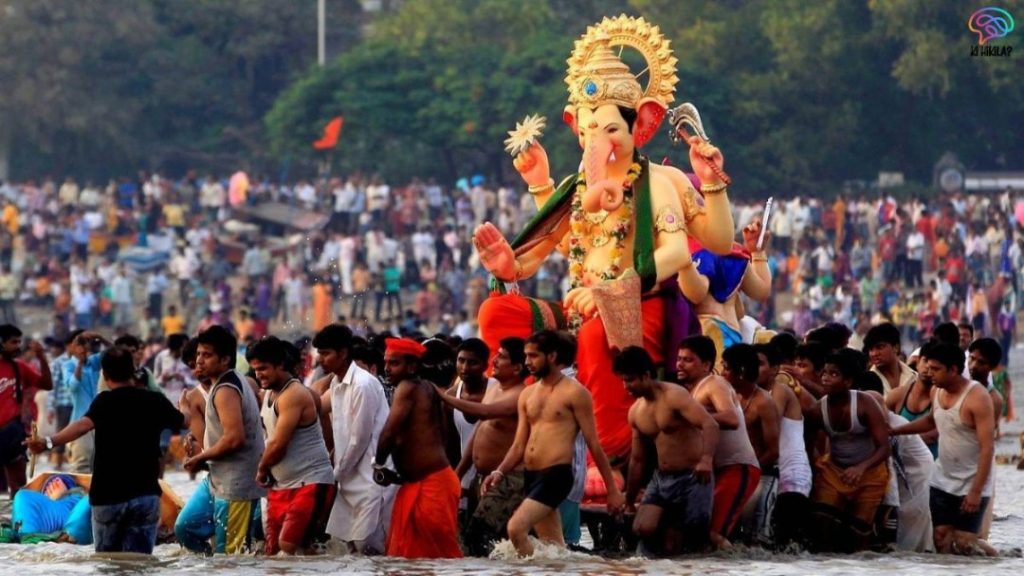
How Ganesh Chaturthi festival is Celebrated
Ganesh Chaturthi is a festival filled with colorful rituals, devotion, and community spirit. Here’s a detailed look at how it is celebrated:
Installing the Ganesha Idol
The festival begins with devotees bringing home or setting up intricately crafted idols of Lord Ganesha. These idols, ranging from small clay figures for homes to massive structures for public pandals (temporary stages), are adorned with flowers, garlands, and ornaments. The idol is placed on a decorated platform, often surrounded by rangoli (colorful patterns made with colored powders), lights, and fragrant flowers, creating a sacred and festive atmosphere.
Daily Worship and Offerings
During Ganesh Chaturthi, devotees perform daily prayers, known as puja, to honor Ganesha. The rituals include chanting mantras, singing devotional songs (bhajans), and performing aarti, a ceremony involving the waving of lit lamps. Offerings include modaks, laddoos, fruits, and other sweets, which are placed before the idol as a sign of devotion. Families gather to recite stories of Ganesha and share meals, fostering a sense of togetherness.
Community Events During Ganesh Chaturthi festival
In cities like Mumbai, Pune, and Hyderabad, Ganesh Chaturthi is celebrated on a grand scale with public pandals showcasing towering Ganesha idols. These pandals become hubs of activity, hosting cultural programs such as music concerts, dance performances, and skits based on Ganesha’s stories. People of all ages visit these pandals to offer prayers, enjoy the festive vibe, and participate in community events, making Ganesh Chaturthi a shared celebration.
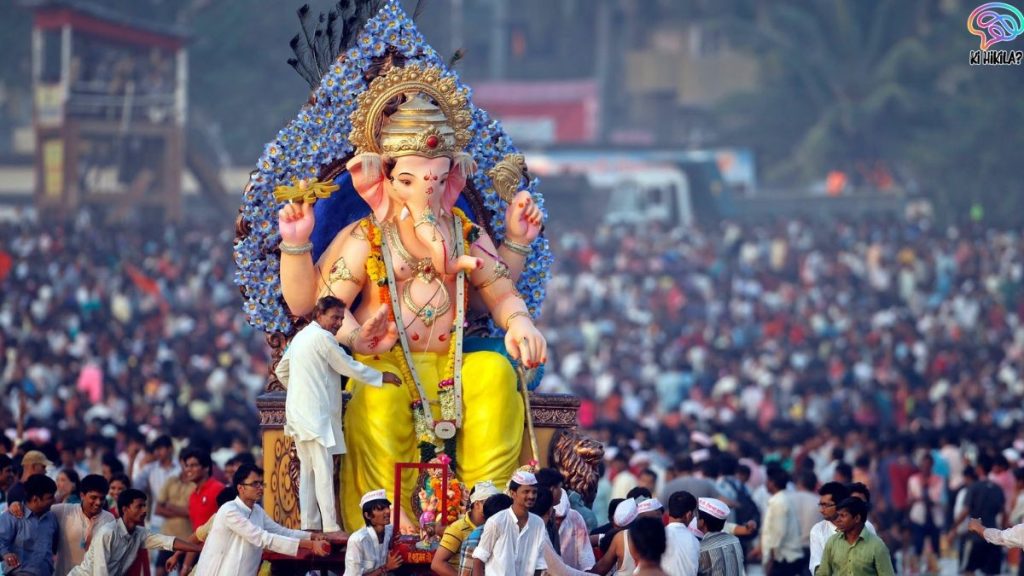
Ganesh Visarjan The Farewell Ritual
The festival concludes with Ganesh Visarjan, the immersion of Ganesha idols in rivers, lakes, or seas. This ritual symbolizes Ganesha’s departure, carrying away devotees’ obstacles. Processions to the water bodies are vibrant, with participants singing, dancing, and chanting “Ganpati Bappa Morya, Pudhchya Varshi Lavkar Ya” (Hail Lord Ganesha, come back soon next year). In recent years, eco-friendly idols made of biodegradable materials like clay have become popular to reduce environmental impact.
The Significance of Ganesh Chaturthi festival
Ganesh Chaturthi holds deep spiritual and cultural significance:
- Spiritual Growth: Devotees pray to Ganesha for wisdom, prosperity, and the removal of obstacles, strengthening their faith.
- Community Bonding: The festival unites people across ages and backgrounds, fostering a sense of belonging.
- Cultural Heritage: Ganesh Chaturthi showcases India’s rich traditions through art, music, and storytelling.
- Environmental Awareness: Modern celebrations emphasize eco-friendly practices, encouraging respect for nature.
Fun Facts About Ganesh Chaturthi festival
- Ganesha is known by 108 names, each reflecting a unique quality, such as “Siddhivinayak” (granter of success).
- The tallest Ganesha idol, over 70 feet, was created in Visakhapatnam, India, in 2016.
- Modaks are a must-have during Ganesh Chaturthi, with some households preparing hundreds for offerings and sharing.
- In some regions, Ganesha idols are crafted from unique materials like chocolate, silver, or even turmeric.
How Children Can Participate in Ganesh Chaturthi festival
For fifth-standard students, Ganesh Chaturthi is a fun and meaningful festival. Here are some ways kids can get involved:
- Create a small Ganesha idol using clay or dough, guided by teachers or parents.
- Draw or paint pictures of Ganesha or make rangoli designs with simple patterns.
- Learn a short Ganesha prayer or bhajan to sing during puja.
- Help decorate the house or pandal with flowers, lights, or handmade crafts.
- Assist in making modaks or other sweets (with adult supervision) to offer to Ganesha.
Eco-Friendly Ganesh Chaturthi Practices
Environmental concerns have led to a shift toward sustainable Ganesh Chaturthi celebrations. Traditional idols made of plaster of Paris and chemical paints can pollute water bodies during immersion. To address this, many devotees now use eco-friendly idols made of natural clay, which dissolve harmlessly in water. Some households immerse idols in buckets at home, reusing the water for plants. Awareness campaigns during Ganesh Chaturthi encourage reducing plastic decorations and keeping water bodies clean, ensuring the festival remains joyful and responsible.
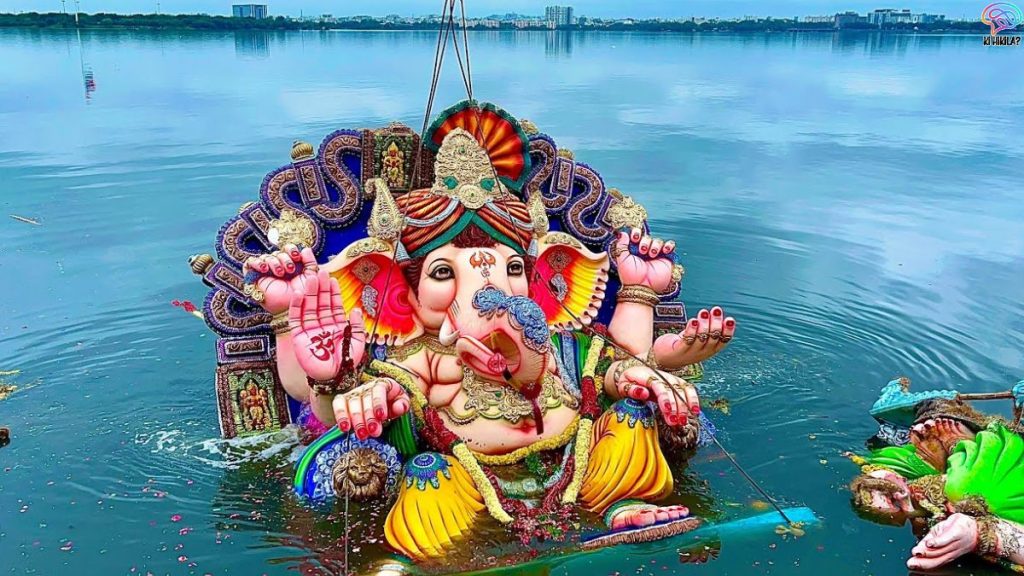
Modern Trends in Ganesh Chaturthi festival Celebrations
Today, Ganesh Chaturthi blends tradition with innovation. Technology has made it possible to share virtual pujas, allowing people worldwide to participate. Social media platforms buzz with photos of Ganesha idols, pandal decorations, and festive recipes. In urban areas, themed pandals recreate scenes from mythology or address social issues, attracting diverse crowds. Additionally, Ganesh Chaturthi has inspired eco-conscious initiatives, with communities organizing clean-up drives post-visarjan to protect local water bodies.
Conclusion
Ganesh Chaturthi festival is a vibrant and meaningful festival that celebrates Lord Ganesha’s wisdom, kindness, and power to remove obstacles. From bringing home beautifully crafted idols to immersing them with heartfelt farewells, the festival fills lives with devotion, joy, and unity. By understanding its history, rituals, and modern eco-friendly practices, both children and adults can fully embrace Ganesh Chaturthi. Let’s celebrate this cherished festival with love, respect for nature, and the chant of “Ganpati Bappa Morya,” welcoming Ganesha into our hearts and homes.
FAQs on Ganesh Chaturthi festival
Q1. What is Ganesh Chaturthi festival and why is it celebrated?
Ganesh Chaturthi is a Hindu festival that marks the birth of Lord Ganesha, the god of wisdom and remover of obstacles. It is celebrated to honor him and seek his blessings for prosperity, knowledge, and good fortune.
Q2. When is Ganesh Chaturthi festival celebrated?
Ganesh Chaturthi is celebrated in the Hindu month of Bhadrapada, usually falling in August or September according to the English calendar.
Q3. How long does Ganesh Chaturthi festival last?
The festival is celebrated for 10 days, starting on Ganesh Chaturthi day and ending with Ganesh Visarjan (immersion of the idol).
Q4. What is the significance of Ganesh Visarjan?
Ganesh Visarjan marks the conclusion of the festival, symbolizing Lord Ganesha returning to his parents, Lord Shiva and Goddess Parvati. It also teaches the spiritual lesson that life is temporary and change is constant.
Q5. What are the main rituals of Ganesh Chaturthi festival?
- Bringing home or installing a Ganesha idol
- Performing daily puja with flowers, incense, and prayers
- Offering sweets, especially modak
- Singing devotional songs and reading Ganesha stories
- Performing aarti morning and evening
Q6. Why is Modak offered to Lord Ganesha during Ganesh Chaturthi festival?
Modak is considered Lord Ganesha’s favorite sweet. It represents happiness, prosperity, and spiritual knowledge.
Q7. Which states in India celebrate Ganesh Chaturthi the most?
Maharashtra, Karnataka, Telangana, Andhra Pradesh, Tamil Nadu, and Goa are known for their grand Ganesh Chaturthi celebrations.
Q8. How can Ganesh Chaturthi festival be celebrated in an eco-friendly way?
People are now using eco-friendly clay idols, natural colors, and performing visarjan in small water tanks or artificial ponds to protect rivers and lakes from pollution.
Q9. What values does Ganesh Chaturthi festival teach us?
The festival teaches unity, devotion, wisdom, patience, and respect for nature. It also reminds us to overcome obstacles with faith and courage.
Q10. Is Ganesh Chaturthi festival only celebrated in India?
No, Ganesh Chaturthi is also celebrated by Hindu communities in countries like Nepal, Mauritius, Fiji, the United States, Canada, and the United Kingdom.



